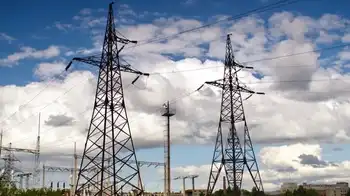Three Gorges Dam not cause of landslides
By New York Times
CSA Z463 Electrical Maintenance
Our customized live online or in‑person group training can be delivered to your staff at your location.

- Live Online
- 6 hours Instructor-led
- Group Training Available
Wang Xiaofeng, director of the governmentÂ’s Three Gorges Project Construction Committee, said the government had spent more than $1.6 billion in recent years on shoring up fragile areas in the region that are prone to landslides and other geological activity.
“The Chinese government is closely monitoring and is intensifying repair work, and I think we can avoid losses as far as possible,” Mr. Wang said.
For weeks, the Three Gorges Dam project has been the subject of growing scrutiny, as scientists and even some officials have publicly expressed concerns about environmental problems attributed to the dam. At the same time, many peasants in the Three Gorges region say the number of landslides is increasing as water has slowly risen in the reservoir behind the dam.
Last week at least 31 people were killed in a landslide that crushed a passenger bus traveling through a construction site near the reservoir. No cause has been announced for that accident. But some scientists and local officials have blamed the rising reservoir for some, if not all, of the recent geological activity in the region. The higher water places greater weight on the shoreline but also seeps into crevices of rock formations and mountains, experts say.
Mr. Wang and two other officials fielded questions for nearly two hours at a Beijing news conference that represented the government’s most concerted effort to tamp down the controversy about the dam. The officials said that the Three Gorges project remained critical for flood control and power generation and that the dam’s benefits outweighed “disadvantages.”
The largely upbeat assessment contrasted with a September forum in the city of Wuhan, where officials and experts discussed a range of environmental problems, including landslides and water pollution in tributaries. State media quoted officials at the forum warning of a future “catastrophe” if environmental problems were not addressed.
At the September forum, Mr. Wang said addressing environmental concerns would be a “long and hard road.” He also warned that “future disasters” could arise if environmental protection work was not intensified.
Mr. Wang described his speech at the forum as an analysis of potential problems that could arise, but said that he considered the overall environmental situation to be stable and, in some cases, better than expected.
He noted that scientists had long considered silt accumulation behind the dam one of the most serious problems, given its potential to cause upstream flooding and reduce power generation. But he said early analysis showed there was less sedimentation than had been predicted, a finding that is contested by some scientists. Mr. Wang agreed that water pollution had been a problem in some tributaries of the reservoir but said that, overall, ecological problems fell within expectations set at the beginning of the project.
Li Yong’an, general manager of the China Yangtze River Three Gorges Project Development Corporation, told reporters that the dam project had not set off any “major” landslides along the main shoreline of the reservoir, though he declined to say how many areas in the region had been designated as unstable. He also did not discuss landslides along the tributaries and high in the surrounding mountains. In one county, Fengjie, local officials have designated more than 800 disaster-prone areas in the last three years.
Asked what lessons officials should take from the Three Gorges project, Mr. Li said future hydropower projects should pay attention to resettlement efforts for displaced people and to protecting the environment.
Meanwhile, Mr. Wang said the government would increase efforts at environmental protection. He said pilot projects were already in place to address several issues, including water pollution from industrial, municipal and agricultural discharge. He said a broader, long-term program would improve biodiversity and cultivate a protective greenbelt to stabilize the region.











